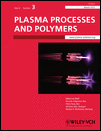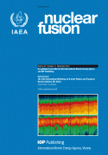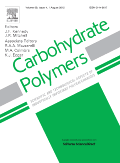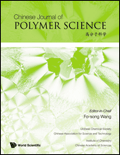
Plasma Processes and Polymers
Scope & Guideline
Pioneering Research in Plasma and Polymer Frontiers
Introduction
Aims and Scopes
- Plasma Polymerization and Modification:
Research on the use of plasma for the deposition and modification of polymer films, including the development of coatings with specific properties such as biocompatibility, hydrophobicity, and antimicrobial activity. - Environmental Applications:
Studies focusing on the use of plasma technology for environmental remediation, including wastewater treatment, degradation of pollutants, and sustainable agricultural practices. - Biomedical Applications:
Exploration of plasma's role in medicine, particularly in cancer treatment, wound healing, and sterilization, emphasizing the therapeutic effects of plasma-activated solutions. - Diagnostics and Characterization:
Investigation into the diagnostic techniques for analyzing plasma properties and behaviors, including the study of reactive species generation and their interactions with various substrates. - Energy and Resource Efficiency:
Research aimed at enhancing the efficiency of plasma processes for energy production, such as hydrogen generation and nitrogen fixation, while also focusing on the economic viability of these technologies.
Trending and Emerging
- Plasma-Activated Solutions:
Research into plasma-activated water and other solutions has surged, focusing on their antibacterial properties and applications in agriculture, medicine, and food safety. - Integration of Machine Learning:
There is a growing trend towards the application of machine learning techniques in plasma research, enhancing predictive modeling, diagnostics, and optimization of plasma processes. - Sustainable and Green Applications:
A notable increase in studies aimed at sustainable practices, including the use of plasma for nitrogen fixation and carbon dioxide conversion, reflects a broader commitment to environmental stewardship. - Advanced Characterization Techniques:
Emerging interest in sophisticated diagnostic methods, such as real-time monitoring and advanced imaging techniques, to better understand plasma interactions with materials and biological systems. - Multidisciplinary Approaches:
Research is increasingly characterized by interdisciplinary collaborations that combine plasma science with fields such as nanotechnology, materials science, and biotechnology, leading to innovative applications.
Declining or Waning
- Traditional Industrial Applications:
Research focusing on conventional industrial applications of plasma, such as surface treatment for adhesion improvement, has seen a decrease as more innovative and interdisciplinary applications gain traction. - Low-Temperature Plasma for Basic Research:
Interest in low-temperature plasma applications primarily for fundamental research purposes has declined, possibly overshadowed by the rise of more practical and applied research in fields like medicine and environmental science. - Static Plasma Systems:
Studies involving static or non-dynamic plasma systems are becoming less frequent, as the field shifts towards investigations of dynamic and pulsed plasma systems that offer better control and efficiency.
Similar Journals

NUCLEAR FUSION
Empowering the scientific community through rigorous scholarship.NUCLEAR FUSION is a prestigious academic journal published by IOP Publishing Ltd, dedicated to advancing the field of nuclear and high-energy physics. With a significant impact factor and recognized among the top-tier journals, it boasts a Q1 ranking in both Condensed Matter Physics and Nuclear and High Energy Physics as of 2023. This journal, which has been published continuously since 1969, serves as a vital platform for researchers, professionals, and students exploring the latest advancements in fusion energy, plasma physics, and the intricate phenomena associated with high-energy states of matter. By disseminating original research, comprehensive reviews, and interdisciplinary studies, NUCLEAR FUSION strives to foster innovation and collaboration in pursuit of sustainable energy solutions, contributing significantly to the scientific community’s understanding of nuclear fusion processes. While the publication offers access options that enhance its reach, its rigorous peer-review process ensures the highest quality of scholarly communication.

Macromolecular Reaction Engineering
Advancing the Frontiers of Polymer ScienceMacromolecular Reaction Engineering is a leading academic journal published by WILEY-V C H VERLAG GMBH, dedicated to advancing the field of chemical and polymer engineering. Established in 2008, this journal focuses on innovative research and developments in macromolecular chemistry, highlighting the intricate processes involved in polymer reactions and engineering applications. With an ISSN of 1862-832X and an E-ISSN of 1862-8338, it serves as an essential resource for researchers, professionals, and students seeking insightful contributions in its diverse category quartiles, which include Q3 rankings in Chemical Engineering, Chemistry, and Polymers and Plastics as of 2023. Although it currently does not offer Open Access options, the journal is committed to publishing high-quality studies that align with current industrial and academic standards, promoting knowledge exchange in the field. By continuously evolving its scope, Macromolecular Reaction Engineering plays a pivotal role in shaping the future of macromolecular research and engineering practices.

POLYMER BULLETIN
Pioneering Discoveries in Condensed Matter PhysicsPOLYMER BULLETIN is a prominent journal in the field of polymer science, published by SPRINGER in Germany. Established in 1978, this peer-reviewed journal focuses on the latest research and developments in polymer chemistry, materials science, and condensed matter physics, boasting a commendable impact factor indicative of its rigorous academic standards. With a Q2 ranking in multiple categories including Chemistry (Miscellaneous), Condensed Matter Physics, Materials Chemistry, and Polymers and Plastics, POLYMER BULLETIN serves as an essential resource for researchers, professionals, and students aiming to stay abreast of innovative findings and methodologies within these interdisciplinary landscapes. Although the journal does not currently offer open access, it provides invaluable insights and data that significantly contribute to the advancement of polymer science. For more information and to access published articles, visit the journal's page on the Springer website.

PLASMA CHEMISTRY AND PLASMA PROCESSING
Elevating Chemical Engineering through Plasma InsightsPLASMA CHEMISTRY AND PLASMA PROCESSING, published by SPRINGER, is a premier journal dedicated to advancing the field of plasma chemistry and its applications in processing technologies. Established in 1981, this journal has attained a strong impact in its field, reflecting its Q2 rankings in several categories including Chemical Engineering, Chemistry, and Condensed Matter Physics. It serves as a crucial platform for researchers, professionals, and students aiming to explore innovative plasma-based techniques and solutions for diverse applications, including materials synthesis and surface engineering. Through rigorous peer-reviewed articles and comprehensive studies, this journal underscores the significance of plasma processes in contemporary scientific and industrial landscapes, fostering knowledge exchange and emerging trends up to the year 2024. With its strategic focus on cutting-edge research, PLASMA CHEMISTRY AND PLASMA PROCESSING remains an essential resource for those committed to the enhancement and evolution of plasma technologies.

Plasma and Fusion Research
Unraveling the Mysteries of Fusion for a Sustainable TomorrowPlasma and Fusion Research is a pivotal journal within the realm of plasma science and nuclear fusion, published by the Japan Society of Plasma Science and Nuclear Fusion Research. With an ISSN of 1880-6821, this journal serves as a vital platform for disseminating significant research findings and advancements from Japan and around the globe. Operating since 2006, it has steadily contributed to the field, reflected in its recognition as a Q3 journal in Condensed Matter Physics for the year 2023 and its ranking of #383 out of 434 in the Scopus categories, placing it in the 11th percentile. Although it currently does not offer open access, the journal's commitment to quality research makes it essential reading for researchers, professionals, and students keen on exploring the complexities of plasma dynamics, fusion technology, and their applications in energy production. Situated in Nagoya, Japan, the journal fosters a collaborative environment aimed at pushing the boundaries of knowledge in plasma physics and enhancing the understanding of fusion processes.

Carbohydrate Polymers
Connecting researchers through impactful discoveries.Carbohydrate Polymers is a prestigious academic journal, published by ELSEVIER SCI LTD, that plays a vital role in the field of materials chemistry, organic chemistry, and polymer science. With its Q1 category rankings in these domains, this journal serves as a critical platform for disseminating high-quality research, innovative methodologies, and significant advancements in carbohydrate-based polymers. Since its inception in 1981 and continuing until 2025, it has fostered critical discussions and collaborations among researchers, professionals, and students worldwide. Although it does not offer open access, its rigorous peer-review process ensures that only the most impactful studies are published. By highlighting new developments in the synthesis, characterization, and application of carbohydrate polymers, Carbohydrate Polymers consistently contributes to the enhancement of knowledge and technology within its field, making it an essential resource for anyone working at the intersection of chemistry and materials science.

CONTRIBUTIONS TO PLASMA PHYSICS
Charting New Territories in Plasma ResearchCONTRIBUTIONS TO PLASMA PHYSICS is a distinguished journal dedicated to advancing the field of plasma physics, published by WILEY-V C H VERLAG GMBH. Since its inception in 1988, this journal has provided a platform for high-quality research, fostering collaboration and dissemination of knowledge in the condensed matter physics domain. With its current ranking of Q3 in the 2023 assessments, the journal is recognized for its contributions to the discipline, as indicated by its position in the Scopus rankings (Rank #252/434) and 42nd percentile within its category. Researchers and professionals engaged in plasma physics are encouraged to submit their work, as the journal aims to publish innovative studies that push the boundaries of current understanding and application in plasma phenomena. While currently not offering open access, the journal remains a vital resource for insights into the complexities and advancements in plasma research, operating from its base in Germany.

PLASMA SCIENCE & TECHNOLOGY
Empowering Researchers in the Field of Plasma TechnologyPLASMA SCIENCE & TECHNOLOGY is a distinguished academic journal published by IOP Publishing Ltd, focusing on the realm of condensed matter physics. With its inception in 2000 and continuing through 2024, the journal serves as a vital platform for disseminating groundbreaking research and developments in plasma science, encompassing experimental and theoretical studies that advance our understanding of plasma behavior and its applications. Although the journal is not open access, its insights are invaluable for researchers, professionals, and students devoted to the intricate physics of plasmas, particularly given its respectable Q2 quartile ranking within its category as of 2023 and a notable Scopus rank that places it within the 44th percentile among its peers. Published from the United Kingdom, the journal aims to foster collaboration and innovation in this essential field of study.

ACTA POLYMERICA SINICA
Pioneering Insights in Polymers and PlasticsACTA POLYMERICA SINICA is a distinguished journal published by SCIENCE PRESS, specializing in the multifaceted disciplines of Chemical Engineering, Chemistry, and Polymers and Plastics. Established in 1996, this peer-reviewed journal provides a critical platform for the dissemination of cutting-edge research and advancements within these fields, promoting innovation and knowledge-sharing among researchers and professionals globally. With its presence in the highly competitive Q3 quartile rankings as of 2023, the journal demonstrates a commitment to maintaining rigorous academic standards while supporting the evolving landscape of polymer science. Operating from Beijing, China, the journal caters to a broad readership and emphasizes the importance of interdisciplinary collaboration in addressing contemporary challenges in material science. Although it does not offer open access, ACTA POLYMERICA SINICA remains a vital resource for scholars seeking to enhance their understanding and contribute valuable insights to the field.

CHINESE JOURNAL OF POLYMER SCIENCE
Exploring the Boundaries of Polymer TechnologiesThe CHINESE JOURNAL OF POLYMER SCIENCE, published by SPRINGER, stands as a premier periodical in the realm of polymer science, showcasing cutting-edge research and technological advancements since its inception in 1985. With an impressive impact factor reflecting its significance in the field, this journal is categorized in the top quartiles (Q1) of Chemical Engineering, Organic Chemistry, and Polymers and Plastics. It features a wide spectrum of innovative studies, thus serving as an essential resource for researchers, professionals, and students dedicated to understanding and advancing polymer-related technologies. The journal is indexed in Scopus, with notable rankings that highlight its influence in the disciplines of organic chemistry and materials science, making it a vital communication platform for authors around the globe aiming to disseminate impactful findings. Although not an open-access publication, the journal ensures robust accessibility through institutional subscriptions and partnerships, further emphasizing its commitment to the advancement of polymer science.